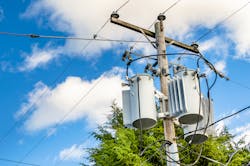Some myths die hard. One of those myths is that if you put one foot on a ground rod, you are safe. This belief is based on the myth that the ground rod is at zero potential with whatever you might touch. The rationale for the zero-potential myth is the myth that electricity follows the path of least resistance (not true), and the ground rod is the low resistance path (false if you put your body in parallel with it).
Yet, grounds are important for power line safety. Never remove a power line ground in a residential application; that creates an electrocution hazard because of the way electric utilities handle residential neutral and ground connections.
In a commercial or industrial setting, removing the power line ground may seriously degrade the performance of the lightning protection system. Lightning too far away to see can induce a power surge on lines that aren’t even energized. If you must disconnect that ground, connect a temporary bypass first.
About the Author

Mark Lamendola
Mark is an expert in maintenance management, having racked up an impressive track record during his time working in the field. He also has extensive knowledge of, and practical expertise with, the National Electrical Code (NEC). Through his consulting business, he provides articles and training materials on electrical topics, specializing in making difficult subjects easy to understand and focusing on the practical aspects of electrical work.
Prior to starting his own business, Mark served as the Technical Editor on EC&M for six years, worked three years in nuclear maintenance, six years as a contract project engineer/project manager, three years as a systems engineer, and three years in plant maintenance management.
Mark earned an AAS degree from Rock Valley College, a BSEET from Columbia Pacific University, and an MBA from Lake Erie College. He’s also completed several related certifications over the years and even was formerly licensed as a Master Electrician. He is a Senior Member of the IEEE and past Chairman of the Kansas City Chapters of both the IEEE and the IEEE Computer Society. Mark also served as the program director for, a board member of, and webmaster of, the Midwest Chapter of the 7x24 Exchange. He has also held memberships with the following organizations: NETA, NFPA, International Association of Webmasters, and Institute of Certified Professional Managers.
